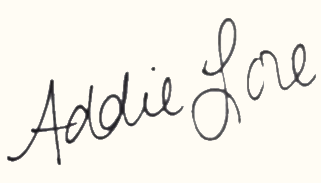Why I’m Moving Away from Natural Dyes
At the center of my design process is the tension between a great garment that you will want to wear again and again and get years of life from, and the effort to make every step of production as sustainable and low impact as possible. Sometimes there are trade offs between one or the other, but they are complimentary in a lot of ways too. Non-toxic natural fibers feel better on your body and stay looking nice longer. Clothes that fit and are made well, and have a lot of versatility get more wears over more time and have less environmental impact per wear. Win-win. When I saw a lot of other small sustainable clothing businesses using natural dyes, I wanted to do this as well, and I have learned so much about plant dyes and really love the process of using them, but there are a few reasons why I no longer believe they are the most sustainable option for producing your garments. You’ll see these little changes taking place in the listings, and now you will understand why. If you have purchased a plant dyes piece and it is fading, please reach out to me, and I will be happy to over dye it with fiber reactive dyes at no cost. Also, I feel the need to say, this is my experience with my ability to produce a clothing line with natural dye processes in my home. This does not mean that other companies offering a naturally dyed product are wasteful, or that the garment will be lower quality. In no way am I under the illusion that I am using natural dyes with the skill of others who have been practicing and perfecting their art over years, and even generations. I still think it’s a beautiful process that can yield really nice results, it just wasn’t allowing me to offer you the best product I can. These are listed in chronological order of how they effect the process, not in order of importance.
The materials are more expensive, which negatively affects the accessibility of my designs.
The process of applying them to your fabric takes several days of labor an a couple of weeks to cure, instead of an afternoon. This is not only effects the amount of time it takes me to get you a finished product, but significantly increases the labor cost of your garments. I could not bring myself to charge what I would need to in order to cover the hours of labor to complete this process, and so I have been basically doing this part for free, and I can’t afford to do that.
I’m not confident that the chemicals used in fiber reactive dyes are more harmful to the environment than the metal salts used in plant dyeing.
It requires a lot more water and electricity than fiber reactive dyes. Like 10 times more water.
The hot water process, and more intense scouring needed for bonding natural dyes to your fabric takes away a lot of the softness I buy them for in the first place. I try so many different fabrics and choose the ones that feel best against my skin and that I want to wear over and over again. Some of this softness returns after multiple washes an wears, but I hate sending you a brand new garment in the mail that feels stiff and scratchy. I also question whether these harsher processes don’t damage the longevity of the material in the long haul as well.
Many of the dyes have not ended up being as wash fast as I would like. I have some pieces that the color has held up well, and others that have faded quite a bit. I am really unhappy with this, as the amount you pay for a custom made garment should get you something that will continue to look great for years.
I have years and years of experience working with fiber reactive dyes in a variety of applications and love their vibrancy, their softness, and their longevity. I can feel a big yes inside when I think of coloring your clothes this way.
Many of my fabric suppliers offer fabrics in gorgeous colors that I love passing on to you. This is another win-win in my opinion. Buying pre-dyed fabrics saves me time and money, and I get to pass those savings onto you.
So, for now, a few things still have plant dyed color palettes that I will be phasing out over time, but from now on, I will be achieving those same colors with fiber reactive dyes. I will also be purchasing fabrics in some beautiful colors. My relationship with the fiber reactive dye process predates my learning natural dyes, and I had a season of doubting whether this was best, so instead of this feeling like a disappointing no to using plant and insect dyes, it feels like an enthusiastic confirmation that my original practice is in fact a better fit for me, and enables me to provide a better product for you. I am really excited about the possibilities this gives me going forward, including plans in the next year of offering our bamboo challis pieces in limited edition multi-color dye baths.

